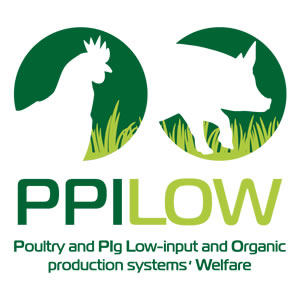WP1: The diversity of farming systems in Europe
WP1: The diversity of farming systems in Europe – by Jarkko Niemi (LUKE)
There is a diversity of low-input outdoor and organic farming systems in Europe. This is evident based on the characteristics of about 90 different organic or outdoor pig and poultry farming systems, animal welfare labels and regulatory frameworks for identified by PPILOW work package 1. Current European Union (EU) organic regulation sets the minimum standards for European organic production. These include, among other things, requirements on group housing and access to exercise (pigs) or open-air area (poultry) as well as prohibition to use cages, boxes, flat decks, preventive antibiotics or restricted feeding in organic farming. In pig farms, the organic rules require straw bedding in some pig groups, nest building possibility and non-slatted resting area, whereas physical castration and tail docking may be allowed in certain cases. In poultry, access to vegetation-covered area and some solid floor area is required by the EU rules, and beak trimming may be allowed in special cases. However, in some member states, such as Germany, actors have developed modified organic systems which go beyond the minimum standards in one or more areas. An example of a standard beyond the minimum is a poultry system which avoids killing day-old male chicks by using dual-purpose breeds. In addition, there are biodynamic labelled farming systems which feature space allowance, feed, sand bathing or group composition characteristics close to the EU organic requirements. Free-range non-organic systems appear to be more diverse than organic. For instance, in the United Kingdom, there are different outdoor farming systems on the market. The main difference between conventional and free-range system is the outdoor run requirement. However, the specification of outdoor run varies from system to system, and can include fixed floor or soil ground either with or without vegetation, grazing or agroforestry, and with or without additional space allowance indoors. Some free-range systems also require using slow-growing breeds or are antibiotic-free production. While different farming systems may focus on similar characteristics of animal welfare, the actual requirements can vary widely. For example, in layers the minimum required outdoor area varies between 2 and 8 birds/m2, and the maximum poultry flock size from 500 to more than 10 000 birds, if restricted at all. Some outdoor systems are mobile. This often refers to a mobile shelter wagon which can be transported from one pasture to another. The benefit of mobile housing is improved outdoor run quality and rotation when compared to fixed housing. Sometimes outdoor production is also associated with small-scale local farming with specialty breeds, such as Mangalica pigs, or short supply chain. Hence, investigations on the organic or outdoor pig and poultry farming systems, animal welfare labels and regulatory framework indicated that there is no one-size-fits-all definition for a low-input farming system.

